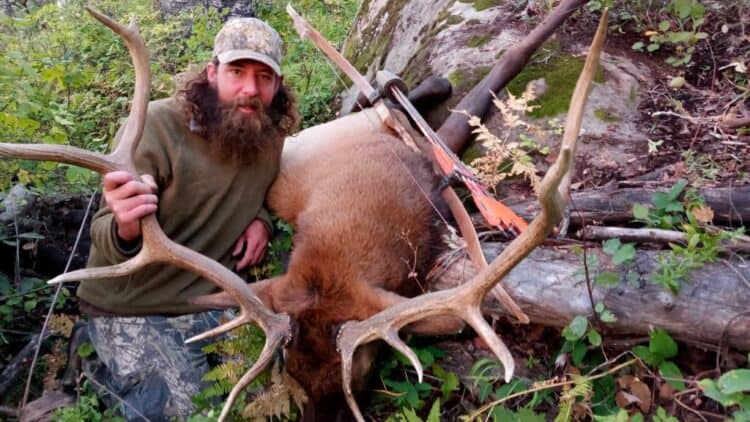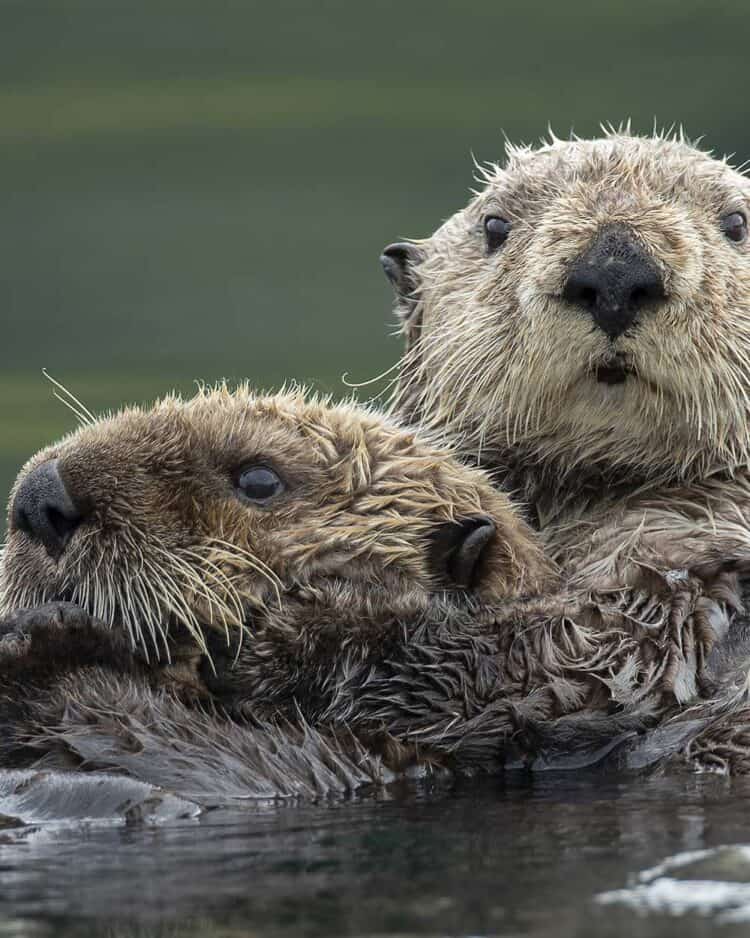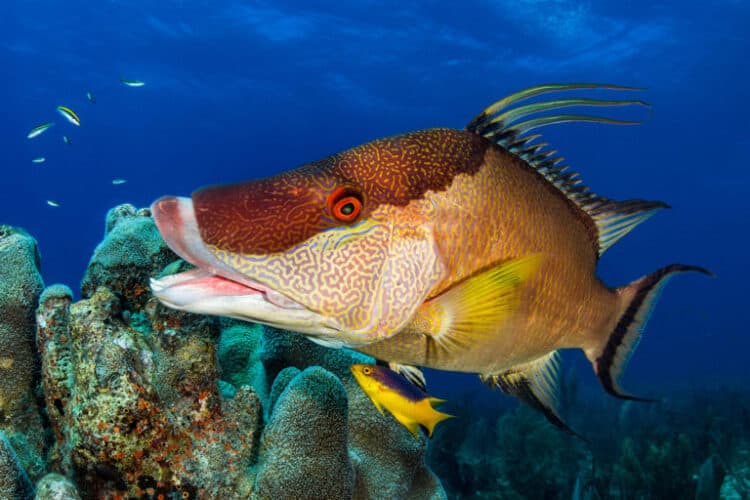There can never be too many eagles, right? The comeback of northern Europe’s largest bird of prey could challenge that notion.
Some scientists are worried that the white-tailed, or sea, eagle (Haliaeetus albicilla), which has recovered from near-extinction in the 1980s, poses a new threat to other at-risk birds.
There are now as many as 24,500 adult white-tailed eagles in Europe, which bounced back after countries banned the pesticide DDT and industrial chemicals known as PCBs.
These pollutants, which dry out eggshells and affect embryo production, cut the birds’ reproductive success by 80 percent, according to the Swedish Museum of Natural History’s Björn Helander, who led Sweden’s white-tailed eagle recovery program for 40 years.
Now, the Baltic Sea coastline is home to well over 2,000 eagles, and numbers are rising fast—almost 8 percent a year in Sweden, for example, according to the Baltic Marine Environment Protection Commission in Helsinki, Finland.
With eight-foot (2.4-meter) wingspans, these apex predators require around a pound (0.5 kilogram) of food a day—and their diet includes other vulnerable birds.
Multiply that by the Baltic population, and it amounts to quite a heap of flesh, especially if your conservation focus is one of the eagle’s prey species.
The situation has caused a real quandary for conservationists working to protect bird populations.
“Ornithologists are trying to weigh conservation value of one species to another,” says Niklas Liljebäck, of the Swedish Association for Hunting and Wildlife Management.
“It’s really difficult.”
Easy Target
Common eider expert Markus Öst, an ecologist at Finland’s ÅboAcademy University, considers “the eagle a real threat to eider populations.”
Studies by Östand his colleagues support a link between the white-tailed eagle boom and declining eider populations in the Baltic, which are considered vulnerable in Europe by the International Union for Conservation of Nature.
“We have been able to show that increased mortality of incubating female eiders is the strongest contributor to the population decline,” he says, adding that rising losses due to predation are“most likely due to eagles.”
Nesting eiders are an easy target,as the birds tend to stay still until it’s too late to escape.
“We have seen eagles both plunge diving from the air to catch females, but also how eagles systematically search for eider nests by hopping on the top of dense juniper [bushes] until the eiders lose their courage and try to get out of their nests,”he says.
Once the female is either killed or escapes, gulls and crows take advantage by raiding the unguarded eggs, he adds.
However, Helander says that increased eagle predation on eiders is a symptom, not a cause, of decline.
For instance, changes in the eiders’ mollusk food supply has forced the birds“into the areas where more eagles are,”he says.“I’m not saying there’s not heavy predation on eiders, because there is.”
“But it’s not the eagles that lie behind this big decline in the population. That’s simply ridiculous to me.”
The eagles are also targeting the Baltic’s largest remaining colony of Caspian terns, says Ola Jennersten, a biologist at the nonprofit group WWF Sweden. The country lists the bird’s Baltic population as near threatened.
Efforts to conserve the colony—on a tiny island some one hundred miles(160kilometers)north of Stockholm—has been plagued by eagles that “pick the young ones one by one and eat them,” he says.
Project “Nightmare”
Another eagle target is the lesser white-fronted goose, an endangered species that in Sweden is down to a single breeding population, in the Arjeplog Mountains. Other populations exist in Europe, mostly in Russia, though total numbers are very small—fewer than 620 birds, according to the IUCN.
The government-backed Swedish Lesser White-Fronted Goose Project monitors their colony and regularly reinforces it with captive-bred birds.
In 2012, the year that white-tailed eagles appeared in the area, the goose population fell by half, from about 150 to 60 birds.
It isn’t known how many eagles are preying on the geese, but at least one individual specializes in targeting them during their summer moult—a time when the geese are unable to fly.
“It was there all the time,” says Liljebäck, who directs the project. “That’s a nightmare for a project like this.”
He notes that stress and disturbance caused by these attacks have a secondary impact, since the temporarily flightless geese are forced off the lakes that protect them from other predators, such as foxes.

In eastern Baltic countries, scientists are concerned that the rebounding eagle is displacing another protected bird of prey, the osprey, says Rimgaudas Treinys, an avian ecologist at the Nature Research Centre in Vilnius, Lithuania.
But Helander argues that the changes in the birds’ territories represent the normal ebb and flow of nature.
“When the sea eagle was exterminated from Sweden, ospreys took over all that habitat because they were fishermen, and now the eagle takes back its old grounds,” he says.
To Kill An Eagle?
The black stork, still a common species, is also thought to be abandoning its nesting sites due to the growing presence of eagles. Remote nest cameras and meal remains also show that the stork is on the eagle’s menu.
At an international conference on the black stork, “we discussed how to minimize the impact,” Treinys says.
“One meaningful answer was to stop actively supporting the white-tailed eagle.”
Wooden shelters that protect nesting eiders are currently being tested in Sweden as one solution, and it could work, says Finland’s Öst.
He says culling the white-tailed sea eagle – an icon of successful conservation efforts – would likely be ruled out.
“Measures directly aimed at reducing eagle numbers are out of the question as being too controversial,” Öst says, and “would certainly provoke an outcry by nature-protection agencies and organizations alike.”
Finding a Balance
Helander, the white-tailed eagle expert, says that “evidence for any drastic action against eagles is really very poor.”
He is opposed to any kind of eagle control, saying it would set a dangerous precedent.
It’s a tricky conservation dilemma, WWF Sweden’s Jennersten says.
But he believes that culling of particular eagles that repeatedly target vulnerable bird populations may be necessary.
“It is of course stupid if the eagles eat all the lesser white-fronted geese,” he says, not least because so much money and effort has gone into trying to save the species.
But as for whether there are too many eagles, Jennersten doesn’t think so.
One way or another, he says, nature will find a balance.
This article was first published by National Geographic on 17 May 2016. Lead Image: White-tailed eagles battle it out in Poland. These top predators have eight-foot wingspans. Photograph by Willi Rolfes, Alamy.
We invite you to share your opinion whether there can be too many eagles? Please vote and leave your comments at the bottom of this page:
Thank you for voting.








Leave a Reply